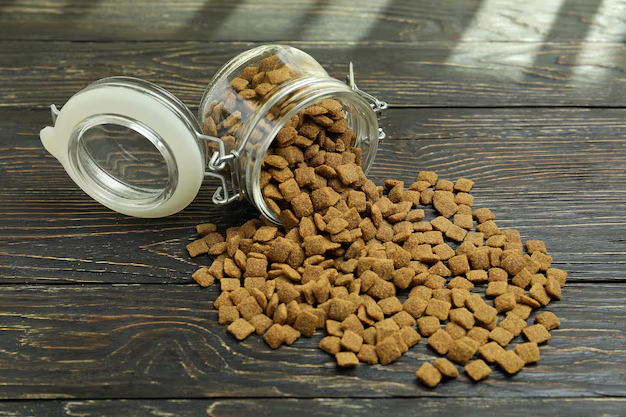Understanding EBT: Can You Purchase Dog Food with Food Stamps?
Navigating the rules of government assistance programs can be daunting, especially when it comes to understanding what you can and cannot buy with Electronic Benefits Transfer (EBT) cards. One common query many people have is whether they can use EBT to purchase dog food. This article will delve into the intricacies of EBT, the types of purchases it covers, and practical advice for pet owners needing financial assistance. Let's explore these aspects to ensure you have a clear understanding of how to make the most of your benefits.
🛒 What is EBT and SNAP?
EBT, or Electronic Benefits Transfer, is an electronic system that allows state welfare departments to issue benefits through a magnetically encoded payment card. The most prevalent program using EBT is the Supplemental Nutrition Assistance Program (SNAP), which is designed to help low-income households purchase food.
Understanding SNAP Benefits
SNAP benefits are primarily focused on purchasing food for human consumption. The program's main goal is to ensure that individuals and families have access to a nutritious diet. Typically, items that can be purchased with SNAP benefits include:
- Fruits and vegetables
- Meat, dairy, and poultry
- Non-alcoholic beverages
- Seeds and plants to grow food
However, SNAP benefits have restrictions on what they can be used to buy, and understanding these limitations is crucial for beneficiaries planning their purchases.
🚫 Items Not Covered by SNAP
SNAP has a clear set of guidelines on what cannot be purchased using these benefits. Here’s a breakdown:
- Alcoholic beverages and tobacco products
- Vitamins, medicines, or supplements
- Prepared foods and hot foods meant for immediate consumption
- Non-food items
The Dog Food Dilemma
Among non-food items, pet food is explicitly excluded from SNAP coverage. Since dog food, regardless of brand or type, falls under the category of non-food items, it cannot be purchased using an EBT card. For individuals relying on SNAP benefits, this can present a challenge if finances are tight and both grocery and pet food costs are unaffordable.
🐾 Navigating Pet Care on a Tight Budget
While EBT cannot be used to directly purchase pet food, there are numerous resources and strategies available for pet owners in need of assistance.
Exploring Alternatives
Pet Food Assistance Programs: Many non-profit organizations and charities offer pet food banks or financial assistance to help with pet-related expenses. Local animal shelters or humane societies often have resources to assist pet owners.
Community Support: Social media groups, community boards, and local forums can be excellent avenues for finding people willing to donate or trade pet food.
Discounted Pet Food: Some pet stores or online retailers offer significant discounts or loyalty programs that can help reduce pet care costs.
Human Food Alternatives: While not ideal for long-term nutrition, certain human foods can be safe for dogs in an emergency. Cooked chicken, rice, or vegetables can temporarily substitute dog food, but it’s crucial to ensure they are safe and additive-free.
Veterinary Offices: Some vet offices may know of financial assistance programs or partnerships with pet food suppliers willing to help lower-income families.
Creating a Pet Food Pantry
Establishing a small pet food pantry at home, similar to stockpiling human groceries, can also help buffer your budget during difficult times. When possible, buy in bulk during sales or take advantage of deals and coupons.
💡 Tips to Maximize Your EBT Benefits
While EBT and SNAP may not cover pet-related expenses, maximizing your benefits on eligible purchases can free up other cash for pet needs.
- Plan Your Meals: Create meal plans based on SNAP-eligible foods to stretch your benefits longer.
- Shop Smart: Look for sales, use coupons, and don't be afraid to choose store brands, which often offer the same quality at a lower price.
- Buy in Bulk: When it makes sense, buying in bulk can be more cost-effective and preserve your budget.
- Grow Your Food: Use SNAP to purchase seeds and plants to start a garden. It’s a long-term strategy but can significantly aid food security.
📋 Key Takeaways
Here's a quick visual summary to enhance skimmability:
- ❌ EBT cannot be used for dog food.
- 🍎 Focus EBT spending on eligible food items for maximum impact.
- 🐶 Seek community resources for pet food assistance.
- 🌱 Consider growing food to offset grocery costs, freeing up budget for pet needs.
- 🛍️ Be strategic in shopping to maximize SNAP benefits.
By looking at these strategies and understanding EBT's limitations, you can stretch your resources effectively.
Staying Informed About EBT
It's essential to stay informed about policy changes in assistance programs like SNAP. Policies may evolve, and being aware of these changes can open new avenues for support. Engaging with local community services or governmental resources can provide further clarification and guidance.
Addressing financial challenges means balancing priorities and leveraging all available resources. Though buying dog food with EBT isn’t possible, there are several avenues to explore that ensure your pet’s needs are met without compromising your food security. Being proactive and resourceful not only helps keep your pantry stocked but also ensures your furry friends are taken care of during tough times.

Related Topics
- Are There Any Meal Kits That Accept Ebt
- Can I Add Ebt To Apple Pay
- Can I Buy Protein Powder With Ebt
- Can I Buy Vitamins With Ebt
- Can I Get a Replacement Ebt Card The Same Day
- Can I Use Coupons With My Ebt At Walmart
- Can I Use Ebt At Costco
- Can I Use Ebt At Target
- Can I Use Ebt Cash On Amazon
- Can I Use Ebt In Another State